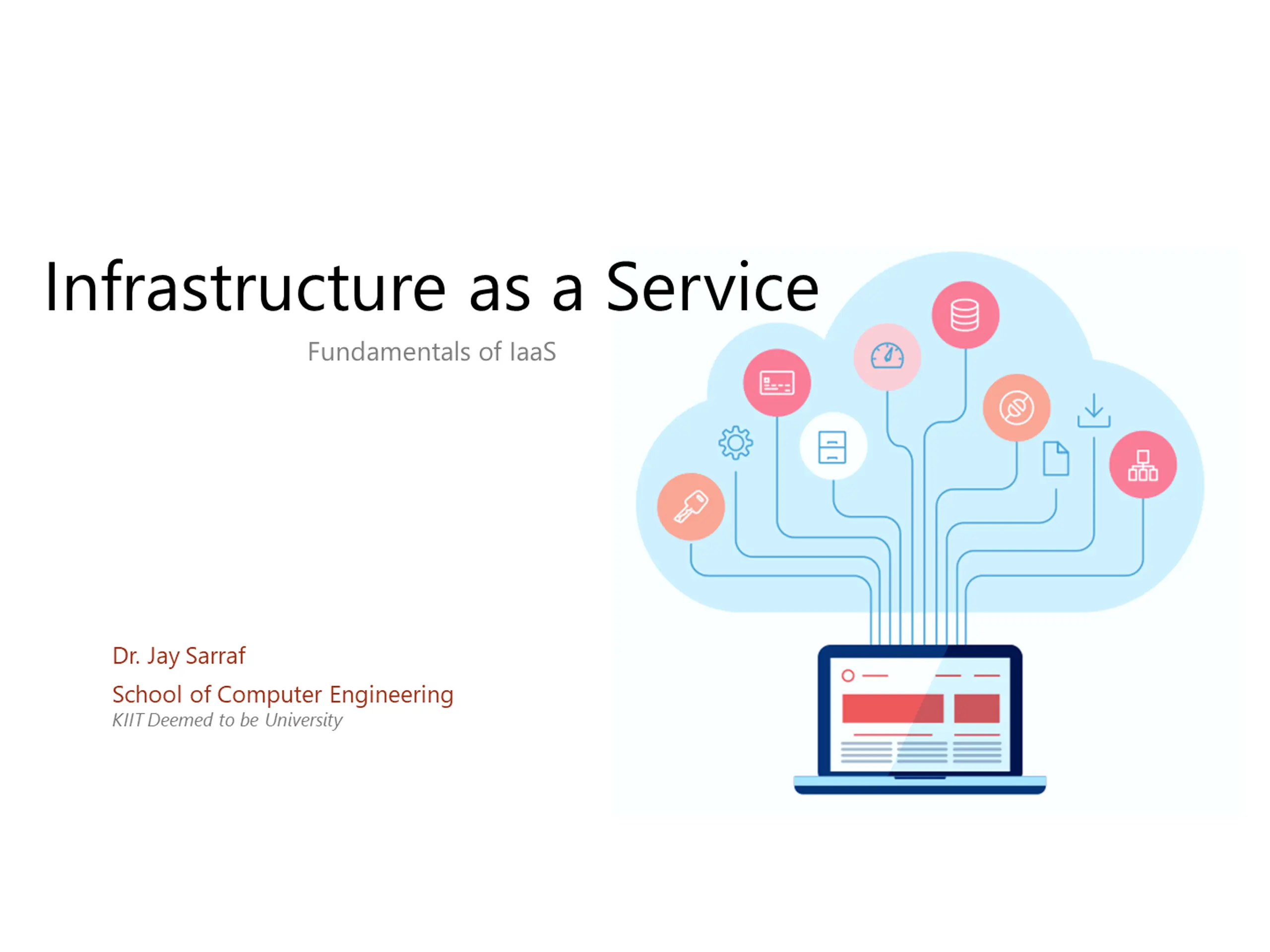Infrastructure as a Service
Basics of Infrastructure as a Service (IaaS) and how it empowers businesses to securely store, process, and retrieve data and applications in the cloud. Discover the key components, benefits, and considerations for adopting IaaS.
Download Presentation

Please find below an Image/Link to download the presentation.
The content on the website is provided AS IS for your information and personal use only. It may not be sold, licensed, or shared on other websites without obtaining consent from the author.If you encounter any issues during the download, it is possible that the publisher has removed the file from their server.
You are allowed to download the files provided on this website for personal or commercial use, subject to the condition that they are used lawfully. All files are the property of their respective owners.
The content on the website is provided AS IS for your information and personal use only. It may not be sold, licensed, or shared on other websites without obtaining consent from the author.
E N D
Presentation Transcript
Infrastructure as a Service Fundamentals of IaaS Dr. Jay Sarraf School of Computer Engineering KIIT Deemed to be University
Introduction What is IaaS? Cloud infrastructure is the fundamental framework of hardware and software resources that empower cloud computing services. It encompasses essential components like servers, storage, networking, and virtualization enabling businesses to securely store, process and retrieve their data and applications in the cloud. Cloud Computing Cloud infrastructure refers to the foundation of hardware and software resources that enable cloud computing services. Infrastructure as a Service It provides the necessary infrastructure components, such as servers, storage, networking, and virtualization, for businesses to store, process, and access data and applications in the cloud. Dr. Jay Sarraf, School of Computer Engineering, KIIT Deemed to be University
Components of Infrastructure as a Service Key components of IaaS IaaS comprises several essential components: Virtual Machines (VMs): These are virtual instances of computers that provide computing power, including processing, memory, and storage, on demand. Cloud Computing Storage: IaaS offers scalable and reliable storage solutions that allow businesses to store and access data as needed. Networking: IaaS provides networking capabilities, including virtual networks, load balancers, and firewalls, to connect and secure the infrastructure. Infrastructure as a Service Management Tools: IaaS platforms offer management tools that allow users to provision, monitor, and manage their infrastructure efficiently. Dr. Jay Sarraf, School of Computer Engineering, KIIT Deemed to be University
Benefits of IaaS IaaS offers numerous benefits for businesses: Scalability: IaaS enables businesses to scale their infrastructure up or down instantly, providing agility and cost optimization. Cost Savings: With IaaS, businesses can avoid the upfront costs of purchasing and maintaining physical hardware, paying only for the resources they consume. Cloud Computing Flexibility: IaaS allows businesses to choose the infrastructure components they need and customize their environments to meet specific requirements. Infrastructure as a Service Reliability: IaaS providers ensure high availability and redundancy, minimizing downtime and providing reliable infrastructure services. Dr. Jay Sarraf, School of Computer Engineering, KIIT Deemed to be University
IaaS for Adoption When adopting IaaS, What organizations should consider? Security: Implementing robust security measures to protect data and applications is essential. This includes access controls, encryption, and compliance with relevant regulations. Cloud Computing Performance: Optimizing network performance, latency, and bandwidth is crucial to ensure a seamless user experience. Vendor Selection: Choose a reputable and reliable IaaS provider that aligns with your business needs and offers adequate support and service level agreements (SLAs). Infrastructure as a Service Data Transfer and Integration: Consider the ease of transferring data to and from the IaaS environment and integrating it with other systems or services. Dr. Jay Sarraf, School of Computer Engineering, KIIT Deemed to be University
Cloud Infrastructure Simplified with IaaS: Key Takeaways Cloud infrastructure serves as the foundation for cloud computing services, enabling businesses to store, process, and access data and applications in the cloud. IaaS provides virtualized computing resources, scalable storage, networking capabilities, and management tools. Cloud Computing Key benefits of IaaS include scalability, cost savings, flexibility, and reliability. Infrastructure as a Service Security, performance, vendor selection, and data transfer are important considerations when adopting IaaS. Dr. Jay Sarraf, School of Computer Engineering, KIIT Deemed to be University
Use cases of IaaS Development and Testing Environments: IaaS is commonly used to create and manage development and testing environments, allowing businesses to rapidly provision resources and reduce time-to-market. Web and Mobile Applications: IaaS provides a scalable and reliable infrastructure for hosting web and mobile applications, ensuring optimal performance and availability. Big Data Analytics: IaaS platforms offer the necessary computational power and storage capacity to process and analyze large datasets in real-time. Disaster Recovery: IaaS can serve as a backup and disaster recovery solution, allowing businesses to replicate their infrastructure and data in the cloud. Cloud Computing Infrastructure as a Service Dr. Jay Sarraf, School of Computer Engineering, KIIT Deemed to be University
Conclusion Infrastructure as a Service (IaaS) is a powerful cloud computing model that provides businesses with flexible and scalable infrastructure resources. By leveraging IaaS, organizations can reduce costs, improve agility, and focus on their core competencies. Understanding the fundamentals of IaaS is essential for businesses looking to embrace the benefits of cloud computing. Cloud Computing Infrastructure as a Service Dr. Jay Sarraf, School of Computer Engineering, KIIT Deemed to be University























